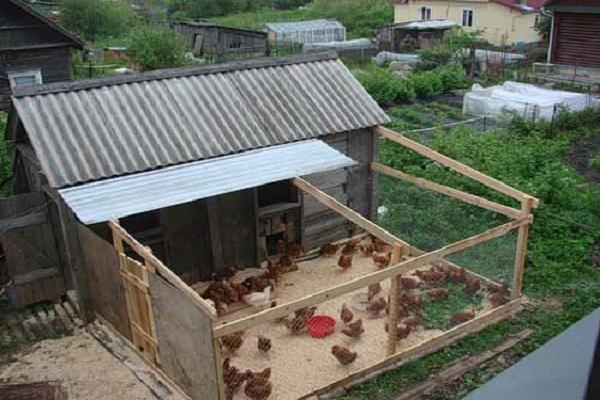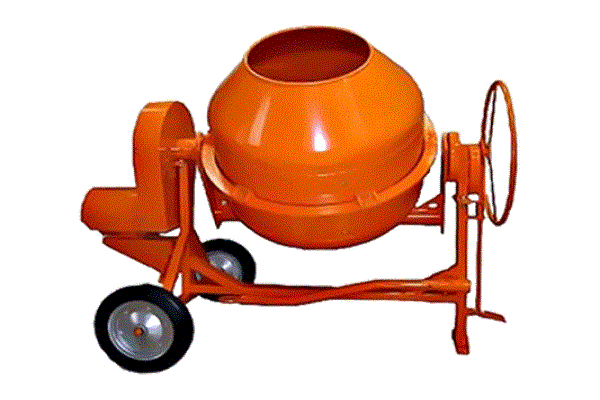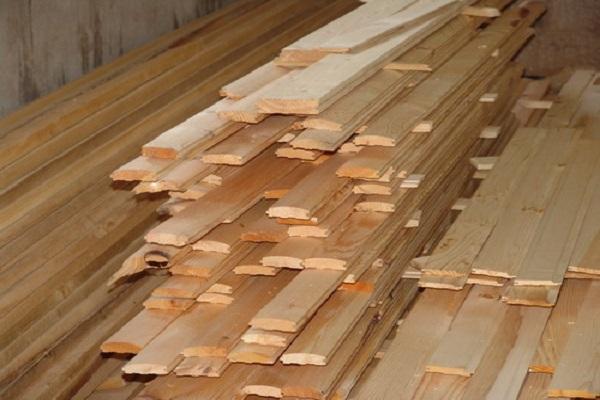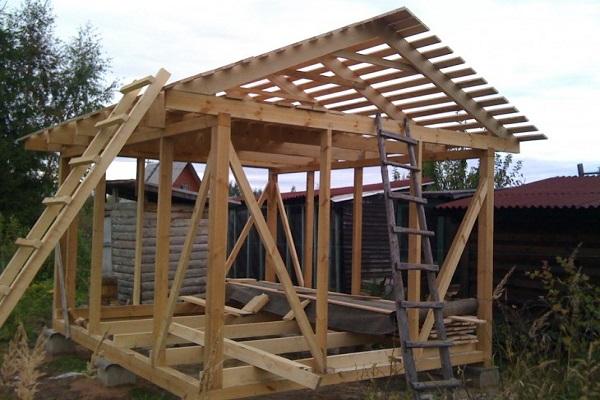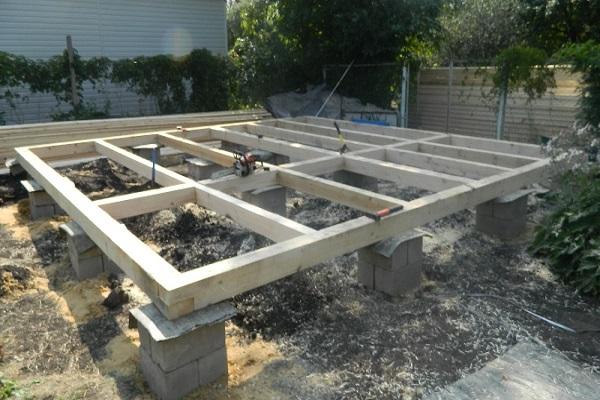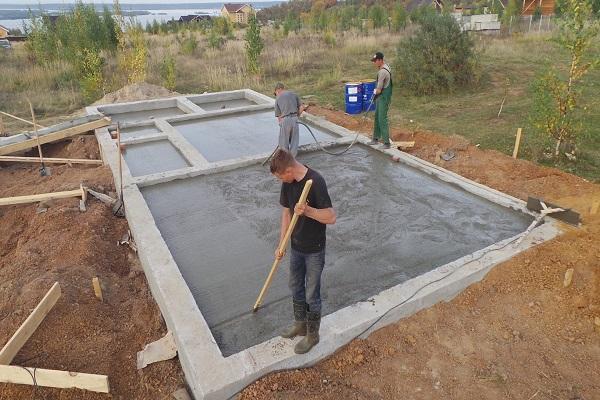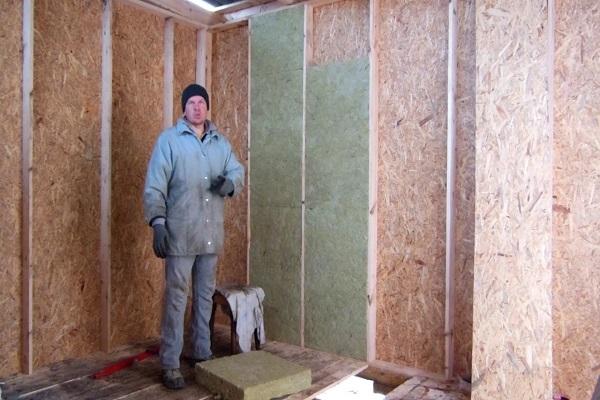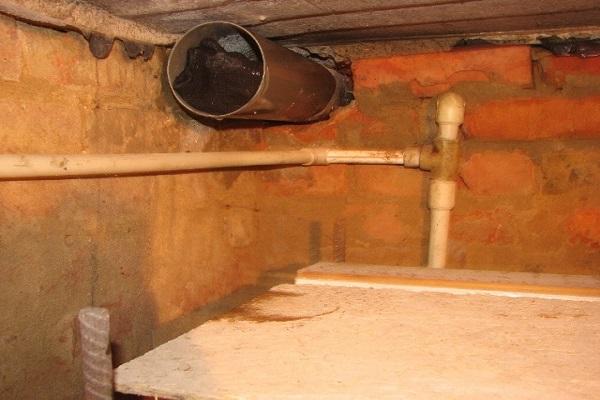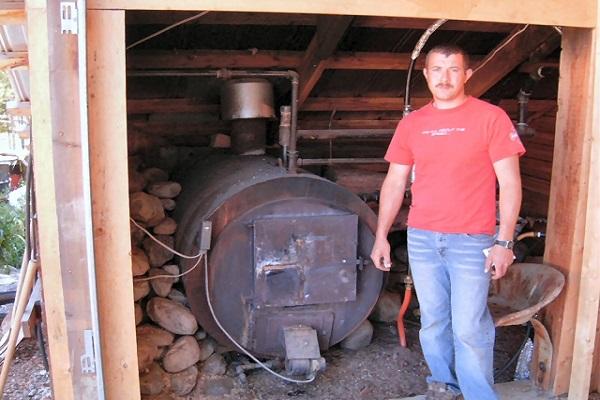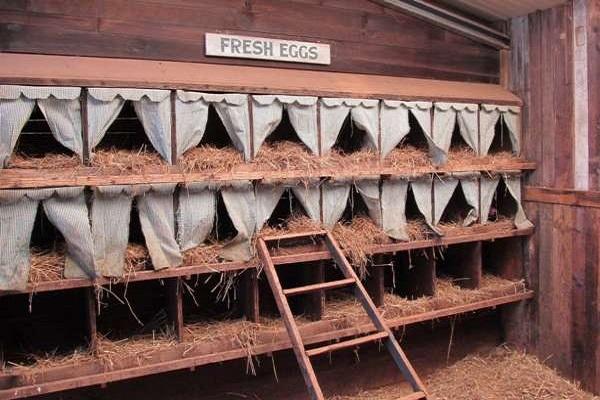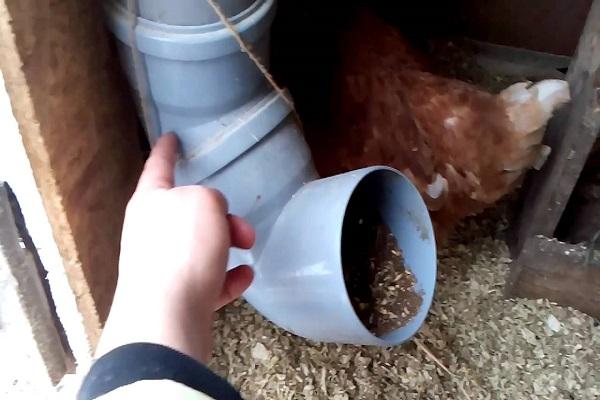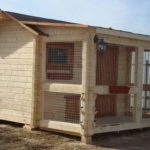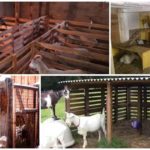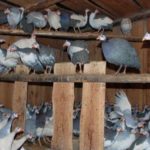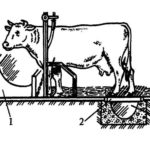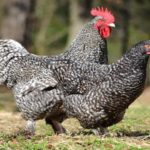On a dacha or personal plot, in addition to crop production, maintaining chickens of egg or meat-egg breeds. The physiological needs of poultry dictate the need to arrange premises, the simplest of which is a barn. Let's consider the stages of building a barn for chickens, where it is best to place it, what should be inside and how, what microclimate should be maintained.
- Where to install a chicken barn?
- Required tools and materials
- How to build a shed with your own hands?
- Preparatory work
- Foundation
- Floor
- Construction of walls
- Construction of the roof and ceiling
- Doors and windows
- Insulation
- Microclimate in the barn
- Ventilation
- Lighting
- Temperature
- Heating for the winter
- What you need in a chicken barn
- Perches and nests
- Drinkers and feeders
- Swimming area
- Walking area
Where to install a chicken barn?
On the site, choose an unshaded, flat or slightly elevated place that is not flooded with melt water and does not experience spring groundwater outflow. The area for walking chickens can be located in the openwork shade of trees. Do not spare space for it, since egg-laying birds are active and move a lot, while meat chickens move little. Rectangular areas are preferable.
Important! The area for the barn is calculated based on the norm: 3 birds per 1 square meter.
A competent approach to building a shed involves creating a general site plan. The future barn for chickens and plantings should be painted on it ahead of time. If there are valuable light-loving plants on the site that will be in the shade of the barn, they should be replanted in advance.
Based on the plan, they draw up a statement of work and a plan for the purchase of building materials and equipment for building a barn, assess the level of material costs, and, if necessary, find ways to reduce costs.
Required tools and materials
Construction equipment and tools include:
- concrete mixing equipment and masonry tools;
- a set of tools for woodworking (saws, jigsaws, hammers);
- drilling equipment (screwdrivers);
- measuring instruments (tape tapes, levels);
- consumables (nails, screws, screws, angles).
Materials for building the foundation:
- brick, cement, crushed stone;
Materials for building the frame and erecting the roof:
- wooden slats, beams, boards for flooring, chipboard sheets for wall cladding, insulating material (mineral wool, penoplex), slate, roofing felt or tiles.
The chicken shed should have windows to allow sunlight in. You will need glass and a wooden frame or small ready-made frames. The walls inside the chicken coop are painted with water-based paint, the floors are lined with linoleum or ceramic tiles. All materials can be selected from old disassembled furniture, after repair and remodeling of the floor, kitchen unit.
Note! Before purchasing materials, carefully consider the construction technology and how you will keep the chickens - year-round with heating or during the season.
How to build a shed with your own hands?
For 18-20 chickens, it is enough to build a rectangular barn with an area of 6 square meters with a length of 3 and a width of 2 meters. It is quite possible to build such a barn with your own hands. Let's figure out how to do this.
Preparatory work
The area intended for construction is cleared of plant debris, stumps and rhizomes are uprooted. If the soil at the future construction site is fertile, the top layer is removed and leveled. Small bumps can be easily leveled using a rail tied to a rope on both sides, or a wooden ladder.
Clarifications are carried out by level. After leveling, the structure is marked. Pegs are driven into the corners, and a cord is pulled along them, which marks the boundaries of the barn and is an indicator of the height of the foundation.
Foundation
The foundation for a chicken coop can be of two types:
- columnar;
- solid.
For a small building of 2x3 meters, a columnar foundation of 4 or 6 racks is sufficient. The main purpose is to protect the building from flooding and freezing of the floor in winter. The foundation posts for the shed are placed at an equal distance from each other. For structural strength, load-bearing logs must be thicker than 80 millimeters.
Square or round holes 0.5 meters deep are dug under the foundation posts. Crushed stone is poured into the bottom and compacted using a beam or post. The racks can be made of brick or cement mortar can be poured inside the formwork made of wood, roofing felt or foam concrete blocks.
A solid foundation is poured into formwork around the perimeter of the barn. The consumption of cement mortar increases, but it will be possible to use logs of smaller thickness.
Important! The height of any type of foundation must be at least 30 centimeters above the ground!
Floor
A moisture-proofing layer of roofing felt is placed on the foundation. Then the bottom trim is attached to the concrete posts with anchor bolts. Wooden logs are connected to each other using the “half-wood” method. Along the perimeter of the lower trim, boards are attached to form a bed for the future floor or a box. Several support joists are placed along the box, they are fastened and the floor boards are nailed. In a winter barn, it is better to make double floors with an insulating layer in the middle or install an electric underfloor heating system.
Construction of walls
Along the perimeter, beams are attached to the floor, on which the vertical posts of the frame, 2.0-2.2 meters high, will rest. The main racks are in the corners of the building, additional ones are in each corner of the windows and doors. It is also recommended to make intermediate vertical posts along the width of the insulating material. The minimum width of vertical beams is 50 millimeters. Frequently check the verticality of the racks by level. A second strapping is made on top of the racks by fastening with corners.
Construction of the roof and ceiling
The rafter part of the roof is attached to the top trim. Choose a high enough elevation angle to ensure normal rain drainage and snow removal, otherwise leaks will not be avoided.
Cross rafters are made in increments equal to the fastenings of the roofing material and the width of the selected type of insulation. A pitch that is too narrow leads to higher construction costs, and a wide one leads to roof deflections and possible stagnation of rainwater in the deflection areas.
A waterproofing layer is laid on top of the rafters. If a soft roof will be used, provide an additional layer of chipboard for compaction or lay slate sheets. From the inside of the barn, under the top frame, the ceiling is fixed.
Doors and windows
It is advisable to install windows on the east and west or south sides. The total window area should be at least 10 percent of the shed floor area. In order to ventilate the internal space, the windows should open from the outside of the barn. In addition to windows and doors, a hole for birds is made in the lower part of the wall communicating with the run.
The door should open outward and close tightly, and the bird hole should be closed with a latch from the outside.
Insulation
The outside walls are lined with insulation, followed by a vapor barrier layer in the form of a dense cellophane film. The outside is covered with chipboard sheets, boards or plastic siding.
Microclimate in the barn
The conditions inside the barn for laying hens are of particular importance, since the correct microclimate helps to avoid the development of infections in the birds and regulate their productivity. What to pay attention to:
- ventilation of the room;
- lighting and day/night cycle;
- air temperature.
Let's take a closer look at each of the points.
Ventilation
The optimal air humidity limits inside the barn are 60-70 percent. In summer it is maintained with frequent ventilation.If there are a lot of birds in the room, an electric fan is mounted on the window, operating as a forced-air ventilation system. Provide ventilation holes under the roof and near the floor.
Lighting
To maintain egg production, laying hens are provided with lighting for at least 13-14 hours a day. One 40-watt fluorescent lamp, suspended from the ceiling in a reflective shade, is suitable for the selected area.
Temperature
The optimal temperature for keeping egg-laying chickens is from 16 to 23 degrees. When the temperature rises, the bird becomes stressed and dehydrated, and when it drops, productivity drops sharply, as energy costs to warm the body increase. In summer, the bird feels comfortable on the walking area.
Heating for the winter
If a heated floor was provided during construction, then this heat is enough to maintain the temperature in the barn at 16-17 degrees. In severe frosts, they are additionally heated with a potbelly stove or an oil radiator. The bedding of straw and sawdust is increased to 20 centimeters, adding a new layer every week.
What you need in a chicken barn
The inside of the barn is equipped with perches, nests where hens lay eggs, feeders and drinkers.
Perches and nests
Perches are round poles in diameter, to which the bird clings with its paws and rests in this position. It is advisable to secure them in two tiers at a distance of 30-50 centimeters from each other. The first tier is at a height of 50-80 centimeters from the floor.
The simplest nests are built along the darkest wall of the barn, from wooden or cardboard boxes measuring 30 x 40 centimeters; one nest is enough for 3-4 birds. The bottom of the boxes is covered with straw.An inclined design is possible, which allows for faster collection of eggs.
Drinkers and feeders
The industry produces ready-made drinkers and bird feeders of various designs. One head requires 8-10 centimeters of space at the drinking bowl and feeder.
Note! Drinkers and feeders are installed at a distance from each other so that the water in the drinker remains clean.
Wooden feeders are suitable for dry food, and mesh feeders for green food. In winter, the bird actively digs in the litter, so it is constantly added, layer by layer.
Swimming area
Chickens need baths made of ash or sun-baked sand. This measure protects the feather cover from insects. The ash should be dry and settled for several months; fresh ash contains substances harmful to birds. In summer, a place for swimming is set up on the street, in winter - in the dressing room of a barn.
Walking area
The area communicates with the barn through a hatch for chickens; it is fenced with a metal or nylon mesh at least 2 meters high. The lower and upper edges are reinforced with boards or metal shields. The walking area per head is at least 1 square meter.

